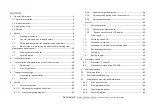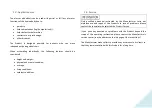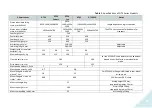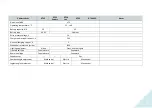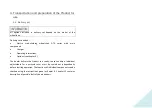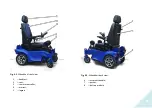
7
2.3.
Safety requirements for the operation of the wheelchair
Risk of accident or injury due to defective safety devices.
Before each
use, the user has to check operative condition of the
Product
, especially
the safety device.
Operation of the
Product
is only possible if all safety devices, such as an
automatic brake, are functional. Defective brakes can cause serious
injuries with fatal outcome.
Risk of accidents due to operating the wheelchair without experience.
Movement in the wheelchair without sufficient experience can lead to
falls and other dangerous situations. Before using the
Product
, it is
necessary to practice on a flat and spacious ground.
Risk of accidents due to uncontrolled movement of the
Product
.
Faults arising during the operation of the
Product
can cause uncontrolled
movements.
In this case, you should immediately contact the
Manufacturer
. If you find faults and problems with the product, it is
necessary to stop using it, as this can be dangerous both for the user and
for the people around.
Risk of accident or injury due to improper sit in the chair or leave it.
Turn off the
Product
when sit in the chair or leave it. The footrests can
only be used to support the legs. Do not stand on the footrests!
Overload damage.
The maximum passenger weight is limited to the
values given in the technical specifications of the
Product
(see 3,
table. 1).
Tire damage.
High air pressure in tires can damage them. Do not exceed
the recommended tire pressure (see 12).
The system will generate an error of the speed sensor if you start to
move in idle mode of geared motors (see 7.5).
Damage caused by overheating of the wheelchair or exposure to low
temperatures.
The
Product
functions normally only in a temperature
range of -15 °C to +40 °C. Do not use the wheelchair outside this
temperature range.
Risk of overturning
Product
s using lifting platforms.
Turn off the
Product
when using lifting platforms or lifts and when traveling on buses
or trains.


